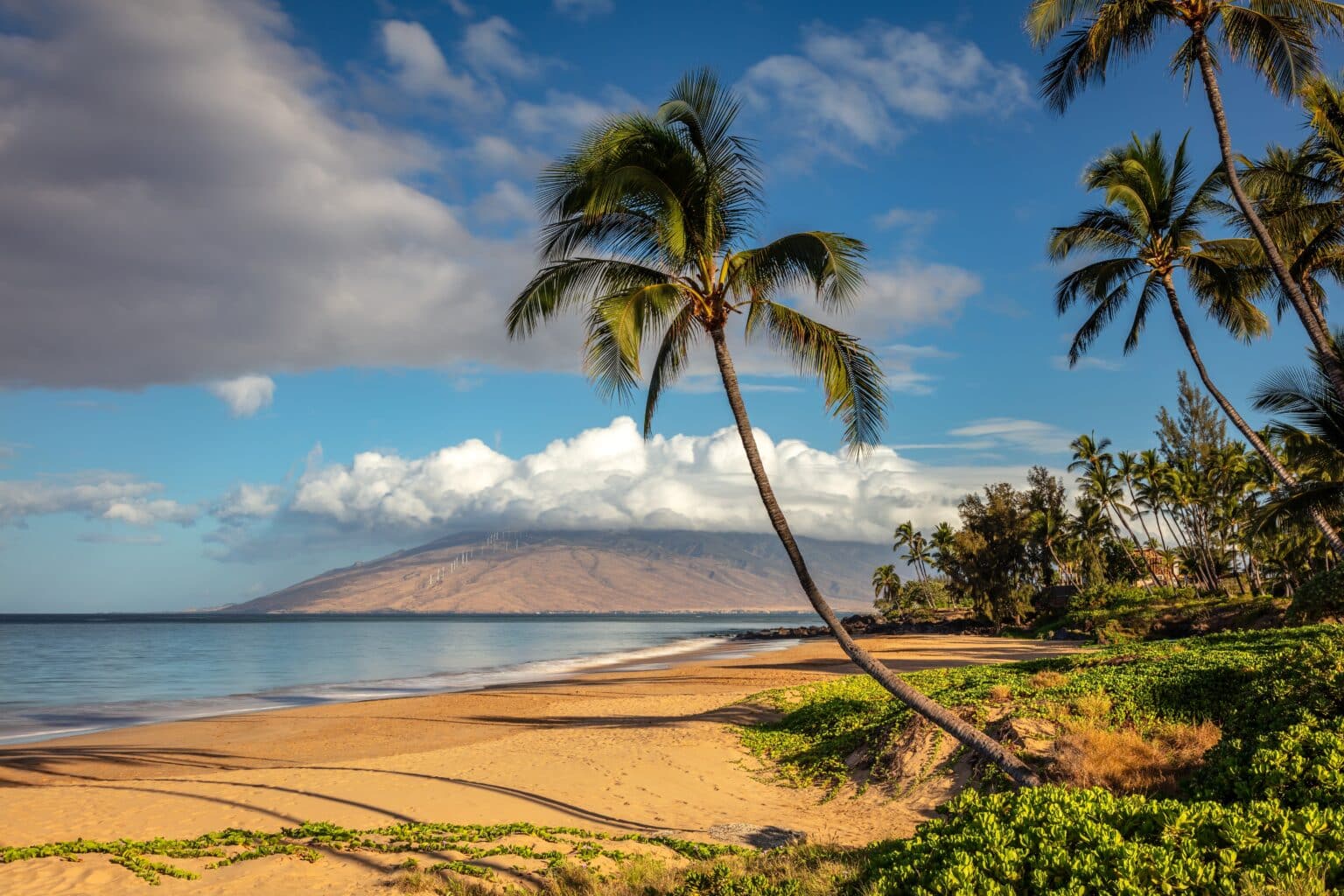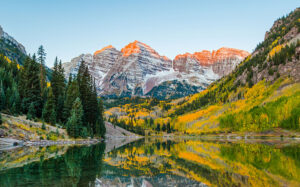Travel professionals from the Hawaiʻi Visitors & Convention Bureau reveal their insider secrets for experiencing the best of Maui, emphasizing that the island has emerged stronger and more meaningful following its recovery from the 2023 wildfire. These local experts share hidden spots, cultural experiences, and authentic encounters that transform typical tourist visits into deeply connected island adventures where ancient Hawaiian traditions meet contemporary hospitality in ways that honor both kupuna (ancestors) and present-day communities who welcome visitors with genuine aloha spirit.
Maui travel tips from residents emphasize early morning adventures, cultural immersion opportunities, and hidden locations where authentic island spirit thrives away from crowded tourist corridors.
Hawaii insider experiences provide access to secret spots and local favorites that guidebooks overlook while connecting travelers with cultural practitioners who share traditional knowledge and spiritual connections to sacred lands.
Authentic Hawaiian tourism balances visitor experiences with community needs and environmental protection that sustains island ecosystems for future generations while honoring ancestral stewardship traditions.
Start Early for Magical Sunrise Moments
Wāiʻanapanapa Black Sand Beach: Dawn at Sacred Shores
The pros recommend taking advantage of the time difference by visiting Wāiʻanapanapa Black Sand Beach at sunrise, when jet-lagged mainland visitors naturally wake early and soft morning light illuminates dramatic volcanic formations. Early morning slots mean fewer crowds and stunning views of the sun rising over dramatic lava cliffs where ancient Hawaiian legends speak of tragic love stories and supernatural occurrences.
Reservations are required at $10 per car plus $5 per passenger for this protected state park, but advance planning ensures access to one of Maui’s most photographed natural wonders. Black sand beaches formed from volcanic activity create striking contrasts against turquoise Pacific waters and verdant coastal vegetation clinging to porous lava rock. Freshwater caves within the park connect to underground volcanic tube systems where ancient Hawaiians sought shelter and freshwater sources.
Hawaii state parks protect fragile ecosystems and sacred cultural sites from overuse through reservation systems that balance visitor access with environmental preservation and respect for Native Hawaiian spiritual connections to ancestral lands.
Black sand beach photography captures otherworldly landscapes where volcanic geology creates dramatic natural sculptures shaped by lava flows meeting ocean waves over millennia of geological transformation.
Haleakalā Sunrise Chants: Spiritual Summit Experiences
Similarly, sunrise chants at Haleakalā with cultural practitioners offer spiritual and immersive experiences that leave lasting impressions beyond typical summit visits where tourists simply photograph dawn breaking over volcanic crater landscapes. These cultural programs connect visitors with Native Hawaiian traditions through oli (chants) welcoming the new day from the sacred volcano summit known as House of the Sun.
Cultural practitioners share traditional protocols, spiritual significance, and genealogical connections between Hawaiian people and the volcano considered a kinolau (body form) of deities in traditional belief systems. Respectful participation in these ceremonies creates meaningful cross-cultural exchanges when approached with humility and genuine interest.
Haleakala National Park experiences include not just scenic views but opportunities to learn about Hawaiian cultural practices, endemic species found nowhere else on Earth, and geological processes that created the Hawaiian island chain through volcanic activity.
Maui sunrise activities transform early morning jet lag into advantage through magical moments when soft light illuminates volcanic landscapes while temperatures remain comfortable and tourist crowds haven’t yet arrived at popular destinations.
Hawaiian cultural programs throughout the islands offer authentic connections with indigenous traditions when led by knowledgeable practitioners who share ancestral knowledge and contemporary perspectives on Hawaiian culture in modern contexts.
Discover Hidden Cultural Gems and Heritage Gardens
Kepaniwai Park: Multicultural Heritage Gardens
Many visitors overlook Kepaniwai Park’s heritage gardens in ʻĪao Valley, which honor Maui’s multicultural roots through displays representing Native Hawaiian, Chinese, Japanese, Korean, Filipino, Portuguese, Puerto Rican and New England cultures that shaped plantation-era society. Each garden section features traditional architecture, landscaping, and cultural elements reflecting immigrant communities who labored in sugarcane fields and created the multicultural fusion defining modern Hawaiian identity.
Unlike the adjacent ʻĪao Valley State Monument Park, Kepaniwai doesn’t require reservations and offers peaceful picnic pavilions where families gather under towering trees beside babbling streams. The free admission and relaxed atmosphere make it perfect for leisurely exploration between more structured tourist activities while learning about diverse cultural influences. Traditional architecture includes Chinese pavilions, Japanese gardens with koi ponds, Filipino nipa huts, Portuguese bread ovens, and Native Hawaiian taro patches.
Iao Valley attractions include both the famous needle formation rising 1,200 feet above the valley floor and lesser-known cultural sites where visitors can explore Hawaiian history without battling crowds at more publicized locations along tourist corridors.
Multicultural Hawaii reflects centuries of immigration and cultural exchange that transformed the islands into one of the world’s most ethnically diverse societies with unique local customs, pidgin language, and traditions blending multiple cultural influences.
Cultural heritage sites throughout Maui tell stories of ancient Hawaiian civilization, plantation-era immigration, and contemporary multicultural fusion that created the island’s unique identity through centuries of social transformation and cultural exchange.
Authentic Local Flavors and Hidden Food Gems
Wailuku Industrial Area: Local Food Scene
The Wailuku Industrial Area hosts some of the island’s best food trucks and pop-ups, tucked away where only locals typically venture among warehouse buildings and small businesses far from tourist restaurant rows. These casual eateries serve authentic plate lunches, fresh poke, and island specialties at prices that reflect local economics rather than tourist premiums charged at beachfront establishments.
Food trucks also appear at community events like Wailuku First Friday, Hāliʻimaile Third Friday and Kīhei Fourth Friday, where residents gather for evening markets featuring local vendors, live music, and family-friendly entertainment. These monthly celebrations provide windows into authentic island community life rarely experienced by tourists staying in resort areas.
Maui food trucks represent the island’s diverse culinary heritage through family recipes passed down through generations and innovative fusion dishes combining multiple cultural influences in creative preparations that define contemporary Hawaiian cuisine.
Local Hawaiian cuisine emphasizes fresh island ingredients, traditional cooking methods like imu (underground oven) preparation, and flavor combinations reflecting the multicultural plantation heritage that shaped modern Hawaiian food culture.
Secret Menu Items: Local Knowledge
Restaurants like Sam Sato’s, Tin Roof and Coco Deck Lahaina offer secret menu items including dry mein variations that locals love but rarely appear on standard menus displayed for tourists unfamiliar with these beloved dishes. Asking about off-menu specialties often reveals kitchen favorites prepared for regular customers who know what to request from servers.
Sam Sato’s dry mein features thin noodles with char siu pork, bean sprouts, and green onions in a style developed by Japanese immigrants working plantation fields. The simple dish represents comfort food traditions passed through generations of local families who maintain culinary heritage despite modernization pressures and changing demographics.
Local restaurant culture rewards curiosity and willingness to venture beyond standard tourist offerings toward authentic dishes that regular customers order by name without needing menu descriptions or explanations.
Art and History: Community Stories and Cultural Context
Wailuku Small Town Big Art: Murals and Moʻolelo
Wailuku’s Small Town Big Art murals tell moʻolelo (stories) through large-scale works perfect for photos while educating viewers about Hawaiian history, cultural legends, and community values that define island identity. Local and visiting artists created these vibrant murals transforming building walls into outdoor galleries celebrating Native Hawaiian culture, plantation heritage, and contemporary island life.
Public art projects revitalize historic downtown areas while creating cultural tourism attractions that bring visitors into local communities beyond resort boundaries. Mural tours connect contemporary travelers with historical narratives and social issues through accessible visual storytelling that transcends language barriers.
Hawaiian storytelling traditions emphasize oral history, genealogical connections, and spiritual relationships between people, land, and ancestors through narratives passed down through generations of cultural practitioners.
Maui street art reflects both traditional Hawaiian artistic traditions and contemporary creative expressions addressing current social issues, cultural preservation, and community identity in changing times.
Alexander & Baldwin Sugar Mill Museum: Plantation History
The Alexander & Baldwin Sugar Mill Museum provides essential context about the plantation history that shaped modern Maui through exhibits featuring machinery, photographs, and personal stories from workers who labored in sugarcane fields under contract systems that brought waves of Asian and European immigrants. Understanding plantation history helps visitors comprehend contemporary Hawaiian society’s multicultural composition and lingering social inequalities.
Sugarcane plantation operations dominated Hawaiian economy from the mid-1800s through the late 1900s, transforming landscapes, importing labor populations, and creating power structures that still influence island politics and land ownership patterns today. Historical museums preserve this complicated legacy through educational exhibits and preserved artifacts.
Walking tours through historic Wailuku reveal architecture from different eras, family-owned businesses operating for generations, and community gathering spaces where residents maintain small-town connections despite increasing tourism development.
Hawaiian history museums throughout the islands preserve artifacts, documents, and personal narratives that might otherwise disappear as older generations pass and development transforms historic districts into modern commercial zones.
Voluntourism and Meaningful Travel Experiences
Mālama Programs: Giving Back to Island Communities
Visitors can participate in mālama (care, preservation) activities through GoHawaii.com/Voluntourism, including lei-making for elders connecting generations through traditional crafts and cultural exchange, taro patch restoration supporting Native Hawaiian food sovereignty and traditional agriculture, and beach cleanups protecting marine environments from plastic pollution and debris threatening ocean ecosystems.
These volunteer opportunities allow travelers to give back to communities hosting them while gaining deeper understanding of environmental and cultural challenges facing Hawaiian islands. Participants work alongside local residents who appreciate visitors contributing labor toward meaningful projects rather than simply consuming resources and cultural experiences without reciprocal contribution.
Lei-making workshops teach traditional techniques using native plants while creating opportunities for kupuna (elders) to share cultural knowledge and personal histories with visitors genuinely interested in Hawaiian culture beyond superficial tourist experiences.
Hawaii voluntourism programs connect travelers with conservation projects, cultural preservation initiatives, and community support activities that create meaningful connections while addressing real local needs identified by community organizations.
Taro cultivation holds profound cultural significance in Hawaiian tradition as the plant from which Native Hawaiians trace their genealogical and spiritual origins according to traditional creation stories recorded in the Kumulipo chant.
Supporting Maui’s Recovery and Resilient Communities
Tourism professionals emphasize that visiting Maui now directly supports economic recovery in communities affected by the 2023 Lahaina wildfire that devastated historic town areas and displaced thousands of residents. Responsible travelers who respect cultural sites, support local businesses, and engage authentically with island communities contribute to Maui’s healing and long-term resilience.
Choosing locally-owned accommodations, restaurants, and tour operators ensures tourist dollars circulate within island communities rather than flowing to mainland corporations that extract profits without reinvesting in local infrastructure or community development. Purchasing authentic Hawaiian-made products from local artisans supports traditional crafts and creative economies threatened by mass-produced imitations.
Maui recovery efforts benefit from visitors who approach travel with cultural sensitivity, environmental consciousness, and genuine interest in supporting communities that open their islands to guests from around the world while maintaining cultural identity.
Sustainable tourism practices increasingly emphasize reciprocal relationships where visitors contribute positively to destinations rather than simply consuming resources and cultural experiences without consideration for long-term impacts on local communities and environments.
Maui’s insider secrets reveal an island where ancient Hawaiian wisdom meets contemporary hospitality, where hidden cultural gems await discovery by respectful travelers, and where authentic experiences create meaningful connections that honor both tradition and innovation in one of the world’s most beautiful destinations.
For comprehensive Hawaiian travel guides, cultural insights, and authentic island experiences, visit The Inspiring Insight – your essential resource for discovering meaningful travel opportunities that connect visitors with the spirit and soul of extraordinary destinations worldwide.


